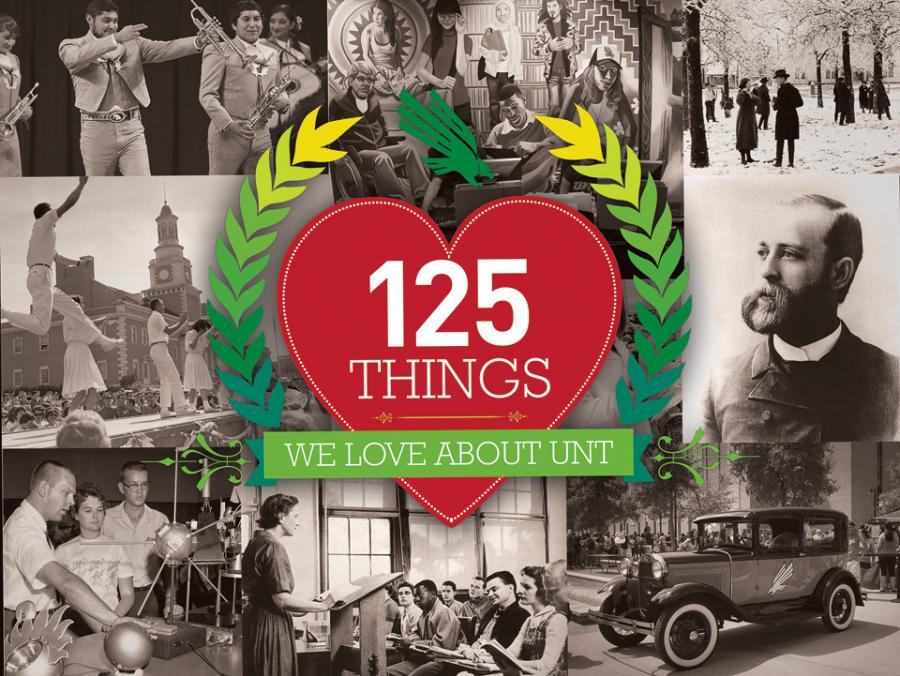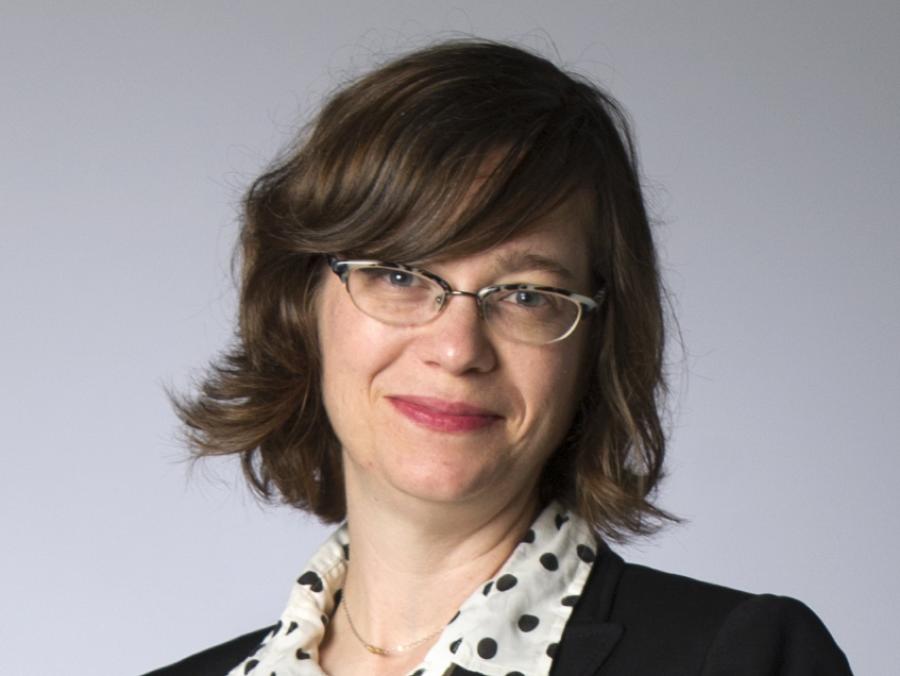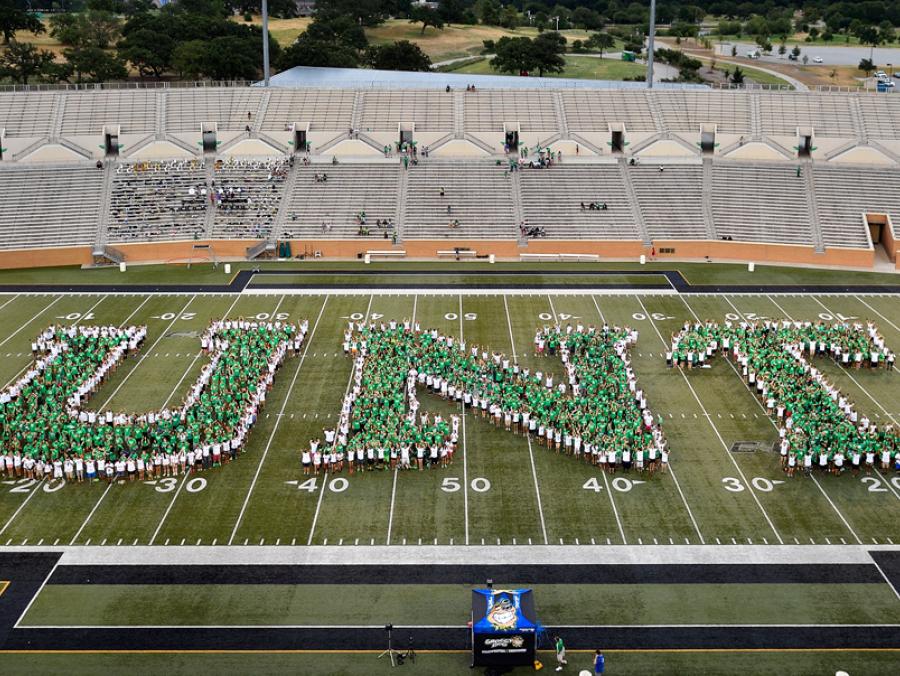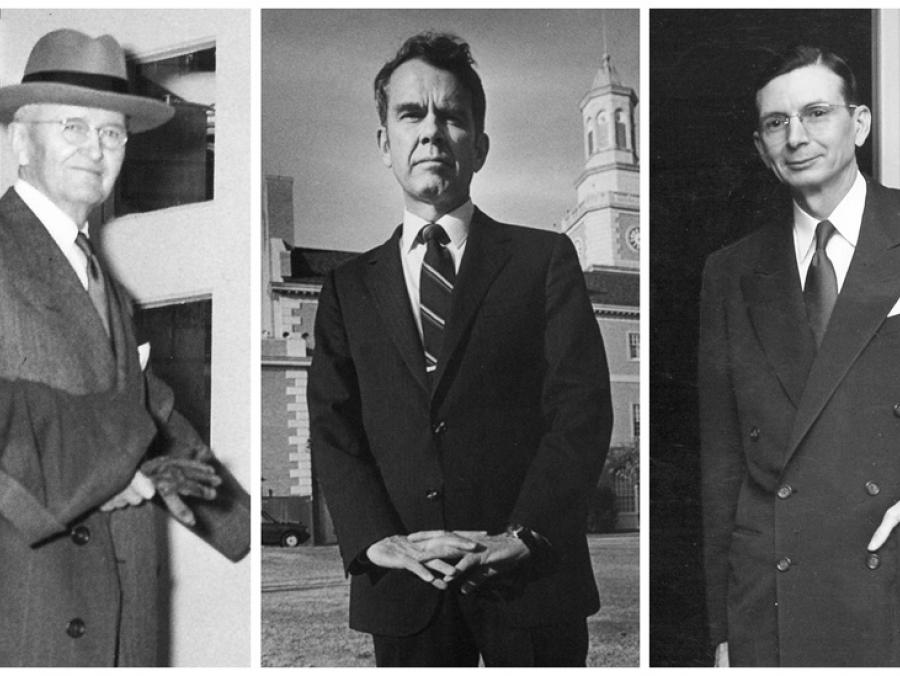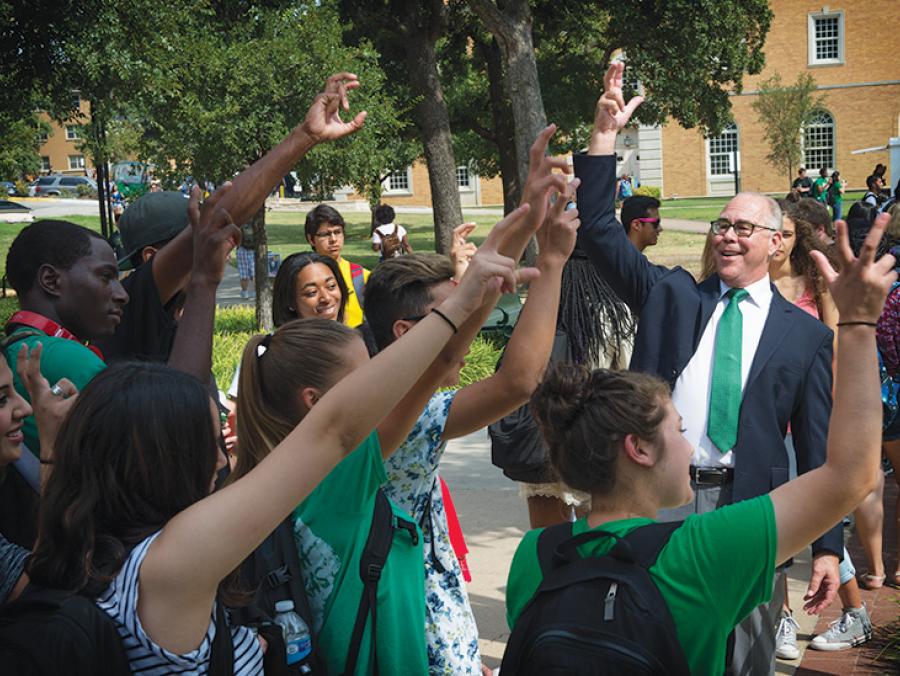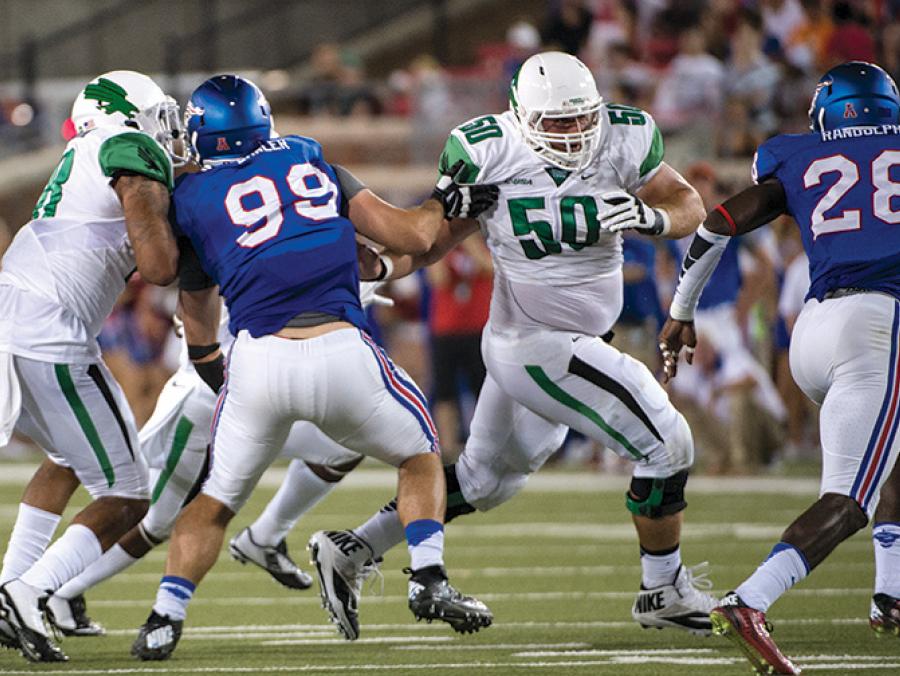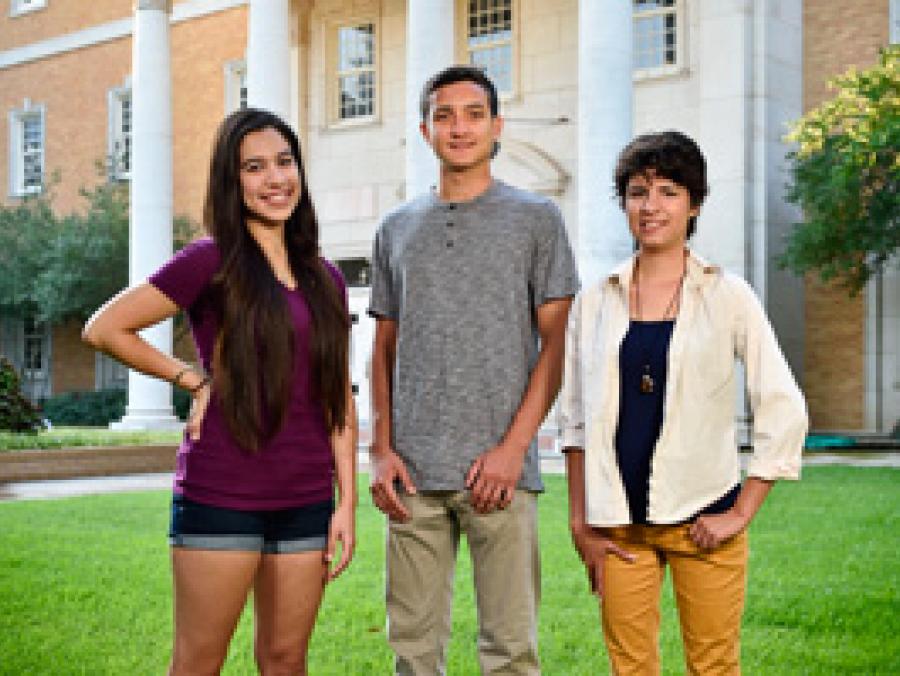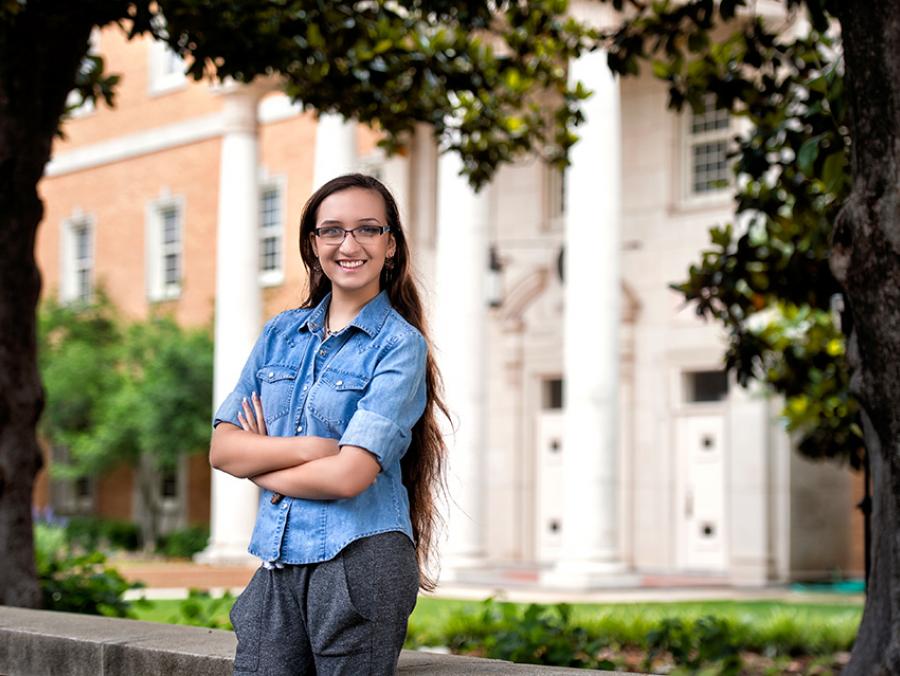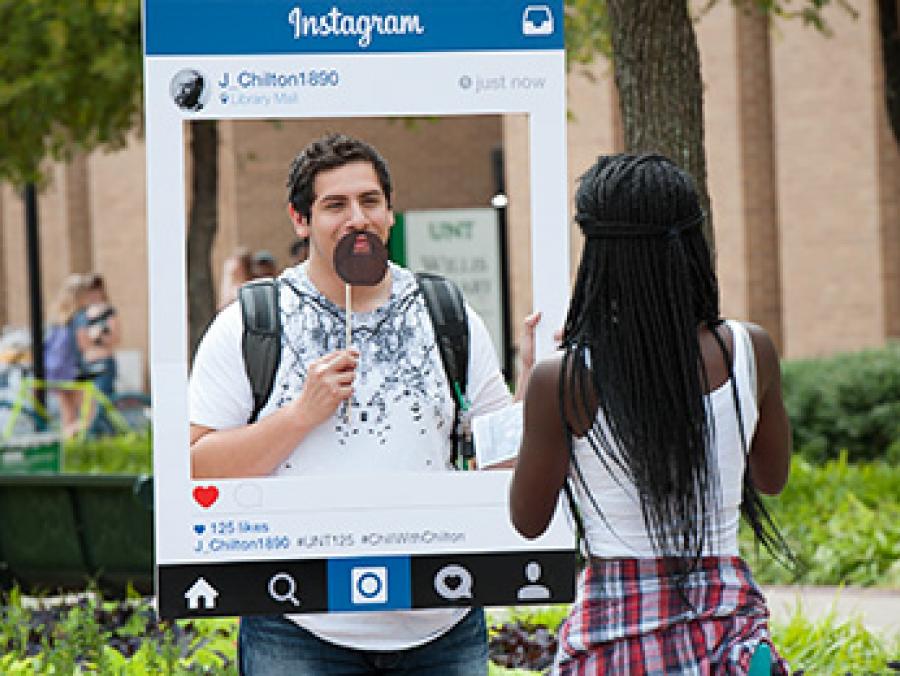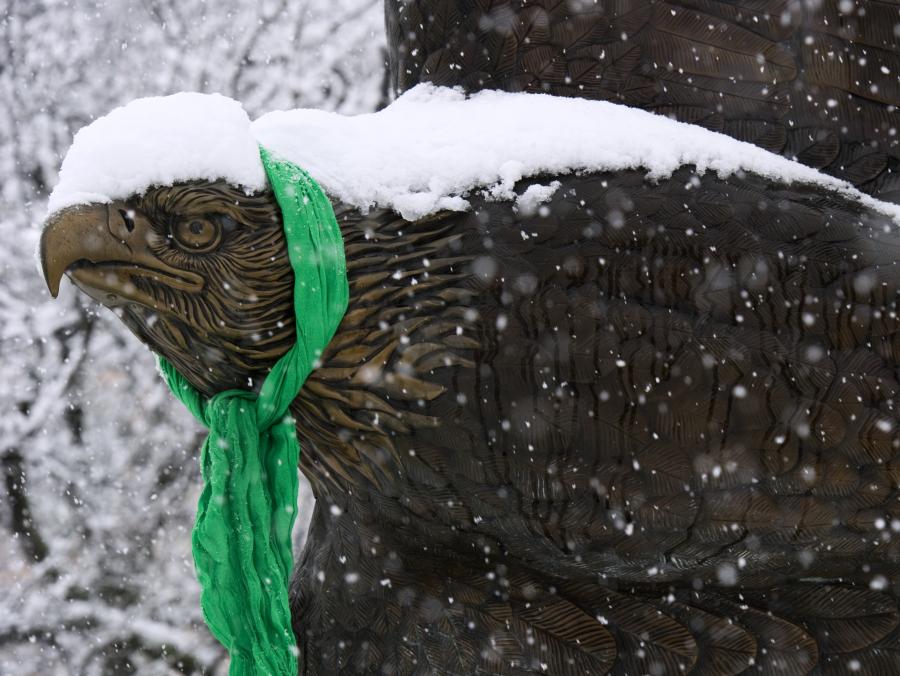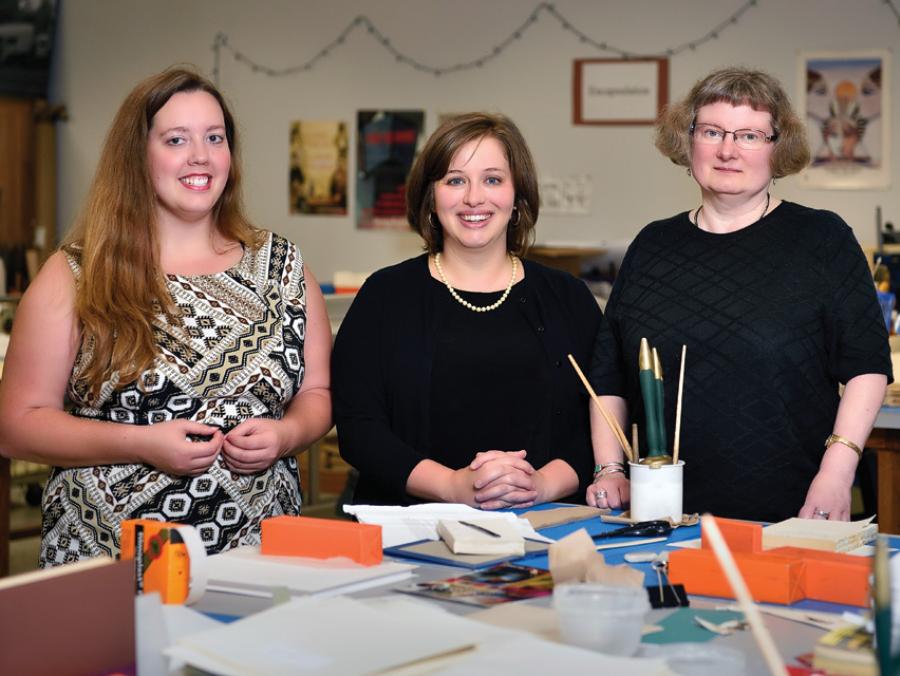 On Sept. 16, 1890, Joshua C. Chilton opened the Texas Normal College and Teacher Training Institute with a dream for the school to lead the way in educating the men and women of Texas.
On Sept. 16, 1890, Joshua C. Chilton opened the Texas Normal College and Teacher Training Institute with a dream for the school to lead the way in educating the men and women of Texas.
Exactly 125 years later, the 16th president, Neal Smatresk, echoed that same dream -- on a much grander scale.
In his 2015 State of the University address, Smatresk outlined a vision for the school -- now the University of North Texas -- to be among the top public research institutions in the nation, known around the world for its excellence, creativity and innovation. He sees a UNT that is a first-choice university, transforming its students into the workforce and leaders of tomorrow.
"In 1890, President Chilton envisioned an institution that transformed young men and women into leaders. He couldn't have imagined what UNT has become today," Smatresk says. "In 125 years, we've become the nation's 25th largest university with more than 37,000 students and 380,000 alumni who are making a difference and building prosperity throughout the world."
In his address, Smatresk laid out the progress UNT has made thus far and the steps the university must take to achieve its vision. He reviewed UNT's accomplishments for the past year, captured in the 2014-15 Accomplishments Summary and the 2014-15 Planning Implementation Report, and he detailed priorities for the 2015-16 academic year that include:
- continuing to grow enrollment and improve retention
- growing federal research funding
- expanding UNT's reach in Dallas, Frisco and surrounding areas
The 2015 State of the University also formally launched UNT's year of 125th anniversary celebrations and was the centerpiece of Founder's Week, a series of events to honor UNT's legacy and impact. As part of that, the event included the debut of UNT at 125, a documentary that highlights UNT's growth and progress for the past 125 years.
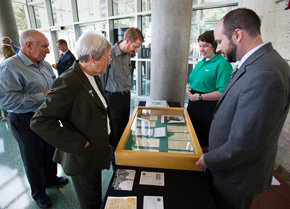 About 800 people attended the 2015 State of the University. The audience included students, faculty, staff, leaders from UNT and the UNT System, community members and distinguished guests, such as state Rep. Myra Crownover, who sponsored a state resolution honoring UNT's 125th anniversary and its milestones.
About 800 people attended the 2015 State of the University. The audience included students, faculty, staff, leaders from UNT and the UNT System, community members and distinguished guests, such as state Rep. Myra Crownover, who sponsored a state resolution honoring UNT's 125th anniversary and its milestones.
"Texas can't be a first-rate state without a first-rate education system," Crownover says. "It's been wonderful to see UNT grow, expand and reach new goals."
Attendees also included alumni and friends of the university such as Jim McNatt ('66), an alumnus and businessman who co-owns local dealerships. McNatt recently pledged more than $2.6 million to the university to support scholarships, research and athletics. His gifts, some of which are eligible for matching funds from the state to support emerging research universities, could have a total impact of more than $3.4 million.
"I'm proud of UNT's leadership. They are dedicated to ensuring the university remains a quality institution, expands its outreach and grows its nationally ranked programs," McNatt says. "We can continue to be a top-notch university if alumni remain involved in the university.
Along with McNatt and his wife, Linda, four additional alumni − Ernie Kuehne ('66), Kristin Farmer ('95), Don Lovelace and C. Dan Smith ('62) – committed $600,000 to support UNT's 15 new National Merit Finalists for four years to help them achieve their goals.
"I'm from humble roots and the dream of a college education for me really began at UNT," Kuehne says. "It's been a labor of love to help UNT and support students."
Farmer is paying forward the help she received as a student.
"It's important for me to now give back and encourage other alumni like me who received scholarships to give, too." she says. "You can never forget where you came from."
Dreaming and planning
Find more about UNT's past and future
- Watch the UNT at 125 video
- Visit the State of the University 2015 website
- Learn about UNT's 2014-15 accomplishments
- Read more about the 2014-15 Planning Implementation Report
- Read the Denton Record-Chronicle's special issue celebrating UNT's 125th anniversary
The State of the University encapsulates a planning process that is about blue-sky visioning and the nuts and bolts of planning, Smatresk says. For UNT to achieve national prominence and Tier One status, it requires planning and action -- two cornerstones of his administration.
Last year's accomplishments included operational changes like making critical leadership hires to ensure the university had a solid foundation to move forward. At the same time, the university strengthened support for students by implementing mandatory advising and launching critical recruitment initiatives such as:
- the Eagle Express Tuition Plan
- the Eagle Advantage guaranteed admission program
- the Oklahoma Tuition Plan
This year's focus will be on ways to improve UNT's academics, research and reputation -- essential ingredients for achieving national prominence.
Through his 2015 Planning Implementation Workshop, Owning Excellence, Smatresk worked with key stakeholders to begin developing priorities for how to help UNT reach Tier One status in its own unique way -- capitalizing on its creative culture and strengths -- by fostering excellence and ownership so that everyone understands the role they have to play.
He detailed 2015-16 priorities for education, research and infrastructure. They include:
- creating a one-stop student success center to improve retention
- recruiting more National Merit and high-ability scholars
- opening a UNT campus in Frisco and expanding programs and classes in Dallas to help UNT increase its prominence, reach and impact
Smatresk noted that UNT must grow research funding by fostering more collaborative research, expanding research focus areas, attracting more high-impact hires, and creating more and better research space.
In the workshop and at the State of the University, Smatresk showed a peer analysis that compared key Tier One metrics and detailed how UNT stacks up among its current and aspirational peers. In areas such as number of degrees awarded, enrollment, and retention and graduation rates, UNT is on par with its peers. But to be successful, UNT must bolster its research funding, research space and endowment -- three important measures for reaching Tier One status.
Tom McCoy, vice president for research and economic development, says UNT must strengthen its research infrastructure.
"We need to recruit more faculty who have research grants and help our current faculty get more research funding -- and use our space accordingly," McCoy says. "We can do this by making sure they have the support, space and equipment they need to conduct the innovative research that will attract funding and public-private partnerships."
Putting plans into action
Finley Graves, provost and vice president for academic affairs, says that UNT's journey to national prominence requires both a cultural and a behavioral shift.
"The peer analysis showed how far UNT has come and how much work we still have to do," Graves says. "While our 125th anniversary is a time to celebrate our progress and our legacy, it's also a good opportunity to chart our path forward."
After building a strong foundation last year, UNT is focused on closing the gaps so that it can become a nationally prominent institution. That means lifting up UNT's core programs in engineering and science, doing more applied research, and attracting more research funding, new donors and partnerships, Smatresk says.
UNT's FY 2016 budget reflects those priorities, with $7.4 million more for academic affairs and research initiatives and $1.5 million more for scholarships, enrollment technology, and recruitment and retention efforts.
"We've set our sights high because that's what our students deserve. Now it's time for all of us to move the needle in other areas that will impact their education," Smatresk says.
Achieving the dream
The 2014-15 accomplishments gave UNT a strong start this year, and UNT enrolled more than 37,000 students -- a new enrollment record. UNT also welcomed its biggest, most talented freshman class and 15 new National Merit Scholars.
There was significant growth across the board, from a 16.3 percent increase in graduate student enrollment to a 7.3 percent jump in undergraduate transfer students and a 6.6 percent gain in freshmen over last year. The diversity of the student body also rose, with increases in Hispanic, African American, Asian American and American Indian student populations, and more students are making UNT their first-choice university.
Shannon Goodman, vice president for enrollment, says UNT's efforts to offer more scholarships, to make the financial aid process easier -- resulting in earlier award packages -- and to continue attracting a high-quality, diverse student population are adding to that momentum. More improvements, including the addition of a Constituent Relationship Management system and focused and targeted messaging to pinpoint recruitment efforts will continue to make these processes even better.
"It's amazing to think that we started in 1890 with 70 students and after 125 years, we have more than 37,000 students," Goodman says. "UNT has and always will be a university of access and opportunity for anyone who wants to go far thanks to a great education."
Noting UNT and Denton's shared history for the past 125 years, Denton mayor and UNT alumnus Chris Watts ('83, '92 M.Ed.) looks forward to building on that to keep UNT and Denton moving forward -- together.
"The city of Denton's relationship with UNT is strong, it's productive, and it's growing by leaps and bounds," Watts says. "Because of what this university has given to me, it's great to form partnerships that benefit this wonderful university."



